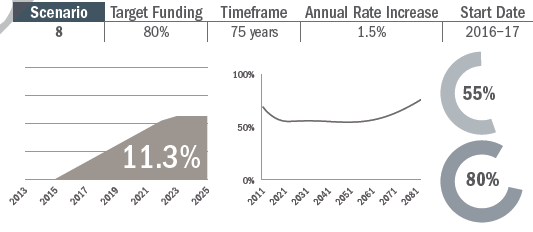Calstrs Long Term Care Program
Nov 05, 2017 Learn how CalPERS Long-Term Care can help pay for care services typically not covered by health insurance, Medi-Cal, or Medicare. TEACHERS' RETIREMENT BOARD REGULAR MEETING. Long-Term Care Program overseen by the is CalPERS. (including CalSTRS. CalPERS Long-Term Care Lawsuit. Not A Member? Join the CalRTA family! CalSTRS Meeting Reports; Long Term Care Information; Health Care and Insurance; Helpful Links.
What is a class action lawsuit? Class actions are lawsuits in which the legal claims and rights of similarly situated groups of people are decided in a single court proceeding. This avoids the need for a large number of people to file similar individual lawsuits. Who represents the interests of the Class? Broadcom Bcm 802.11n Network Adapter Driver there. The court appoints “class representatives” and “class counsel” to pursue the legal claims on behalf of the class.


Ultimately, however, the court is there to protect the interests of the class and to make sure that the representation by class counsel is fair and adequate. Who is the Judge in this case?
Chemcad 6.5 Keygen 2017 - Torrent 2017 there. The judge assigned to handle this case is the Honorable Ann I. Pc Corner Price List Pdf. Jones, Judge of the Los Angeles County Superior Court.
What is this case about? The lawsuit generally alleges that it was improper for CalPERS to impose an 85% rate increase on individuals who purchased LTC1 and LTC2 policies issued through CalPERS’ Long Term Care insurance program. Specifically, the lawsuit alleges that in October 2012, CalPERS adopted an 85% rate increase for certain policy holders that was allegedly necessitated by investment losses in the LTC Program and CalPERS’ decision to change its investment strategy. The plaintiffs assert that under the contracts between CalPERS and Class Members, CalPERS is not permitted to increase premiums for these reasons. The lawsuit also alleges that the 85% premium increase breaches the fiduciary duty CalPERS owes to Class Members. Plaintiffs also allege that the Towers Watson Defendants negligently performed actuarial services in and before 2004 relating to the LTC Program and that this also caused the 85% increase adopted by CalPERS in October 2012.
This lawsuit seeks a recovery only with respect to the 85% rate increase implemented in 2015 and 2016 and does not seek a recovery relating to earlier premium increases that occurred in 2003, 2007, 2010, 2011, 2012, 2013 and 2014. Both CalPERS and the Towers Watson Defendants deny that they have done anything improper and deny that anything they may have done caused the injuries claimed by the Class. If I changed my coverage after the announcement of the 85% rate increase, am I included in the Class? The lawsuit seeks relief for all harm allegedly caused by CalPERS’ decision to implement the 2015-2016 rate increase. This includes seeking relief for policy holders who either elected to pay the 85% increase or chose to reduce coverage in order to avoid the increase. However, you are not eligible to be part of the Class if your policy went into claim and your premium payments were suspended prior to the increase and has remained in claim ever since.